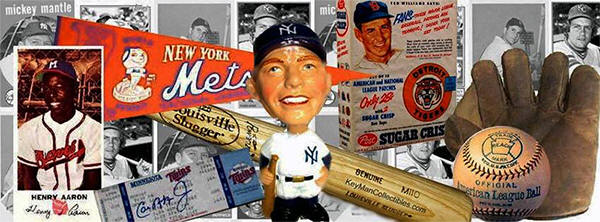| |
Great Western Athletic Goods of
Chicago was primarily a uniform
manufacturer. Thomas E. Wilson & Co.
Athletic Goods wanting to establish a niche in
the uniform market, merged with Great
Western in 1925. The company was renamed
Wilson-Western Sporting Goods. Then in
1931, changed to the Wilson Sporting
Goods Co. Wilson also produced Great
Western branded baseball equipment for
the GW catalog.
The gray wool pinstripe baseball pants features; a ventilated crotch,
button fly, tunnel belt loop in the
back and 4 belt loops in front, large
patch pocket on hip, one row soutache
trim on the outside seams, and elastic
at knees. Pinstripe uniforms were
introduced in 1888, and became more
popular around 1907. The New York
Yankees, best known for their
pinstripes, first tried the style in
1912 and adopted pinstripes for good
beginning in 1915.
Uniform pants have gone through many style changes and trends with how
players wore their pants. During the
first half of the 20th century,
ballplayers wore their pants so that
their stockings showed to the bottom of
their knee.
This 1930s Great Western uniform pants features elastic at the bottom to
be worn around the knee, so the baggy fit pant
legs would hang over, and hide the
elastic. A trend toward lowering the
pant leg crept into baseball fashion.
The trend of ballplayers lowering their
pant legs became more popular with each
passing decade.
In the early 1950s, longtime umpire Bill Stewart called for an end to the
long pants, citing difficulties in
determining the location of a batter’s
knee, and thus the bottom of the
strike-zone. By the 1990s, the height
of the pant leg dropped to the
"No-Sock" look, with some players even
tucking the pant legs into their shoes.
|
|


